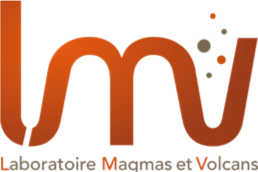Parc d’autoclaves
Le Laboratoire Magmas et Volcans possède une série d’autoclaves à chauffage externe et un autoclave à chauffage interne. Historiquement, l’autoclave à chauffage interne BBL (Bretagne-Basset-Loire ; Figure 1) est le 1er instrument de pétrologie expérimentale installé au LMV : il date en effet de décembre 1977 et a été mis en service par Pierre Boivin et Jacques Kornprobst. Cet instrument exceptionnel (capable de monter à 1,5 GPa en pression d’azote) a été mis hors service en 2012 suite à une évolution des normes de sécurité. Actuellement, le parc d’autoclaves est constitué de quatre autoclaves à chauffage externe et un autoclave à chauffage interne.
Autoclave à chauffage interne

Figure 1. Autoclave à chauffage interne BBL avec le multiplicateur de pression 15 kbar en arrière-plan.
L’autoclave à chauffage interne BBL doit être remplacé en 2015 par un autoclave à chauffage interne Nova Swiss financé par le Laboratoire d’Excellence ClerVolc avec un soutien des fonds FEDER (Figure 3). Le nouvel instrument a été calculé pour des pressions allant jusqu’à 1 GPa et pour des températures jusqu’à 1450°C. Il est monté en position verticale, ce qui permet la trempe rapide des échantillons en fin d’expérience. Il est aussi équipé d’un système de décompression automatisé. Cet autoclave à chauffage interne a été spécialement conçu pour étudier l’ascension et le dégazage des magmas basaltiques.
Liste (non exhaustive) de travaux réalisés avec nos autoclaves.
Cabane H., Laporte D. and Provost A., 2001. Experimental investigation of the kinetics of Ostwald ripening of quartz in silicic melts. Contrib. Mineral. Petrol., 142: 361-373.
Cluzel N., Laporte D., Provost A. and Kannewischer I., 2008. Kinetics of heterogeneous bubble nucleation in rhyolitic melts: Implications for the number density of bubbles in volcanic conduits and for pumice textures. Contrib. Mineral. Petrol., 156: 745-763.
Gibert F., Guillaume D. and Laporte D., 1998. Importance of fluid immiscibility in the H2O-NaCl-CO2 system and selective CO2 entrapment in granulites: experimental phase diagram at 5-7 kb, 900 °C and wetting textures. Eur. J. Mineralogy, 10: 1109-1123.
Grunder A. L., Laporte D. and Druitt T. H., 2005. Experimental and textural investigation of welding: effects of compaction, sintering, and vapor-phase crystallization in the rhyolitic Rattlesnake Tuff. J. Volcanol. Geotherm. Res., 142: 89-104.
Hamada M., Laporte D., Cluzel N., Koga K. T. and Kawamoto T., 2010. Simulating bubble number density of rhyolitic pumices from Plinian eruptions: constraints from fast decompression experiments. Bull. Volc. 72 (6): 735–746.
Mourtada-Bonnefoi C. and Laporte D., 1999. Experimental study of homogeneous bubble nucleation in rhyolitic magmas. Geophys. Res. Lett., 26: 3505-3508.
Mourtada-Bonnefoi C. and Laporte D., 2002. Homogeneous bubble nucleation in rhyolitic magmas: an experimental study of the effect of H2O and CO2. Jour. Geophys. Res., 107 (B4), DOI 10.1029/2001JB00290, ECV 2: 1-21.
Mourtada-Bonnefoi C. and Laporte D., 2004. Kinetics of bubble nucleation in a rhyolitic melt: An experimental study of the effect of ascent rate. Earth Planet. Sci. Lett., 218: 521-537.
Vielzeuf D. and Montel J-M., 1994. Partial melting of metagreywackes. Part 1. Fluid-absent experiments and phase relationships. Contrib. Mineral. Petrol., 117: 375-393.
Mise à jour : Sylvie Demouchy
Contact : Didier Laporte





